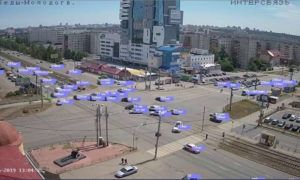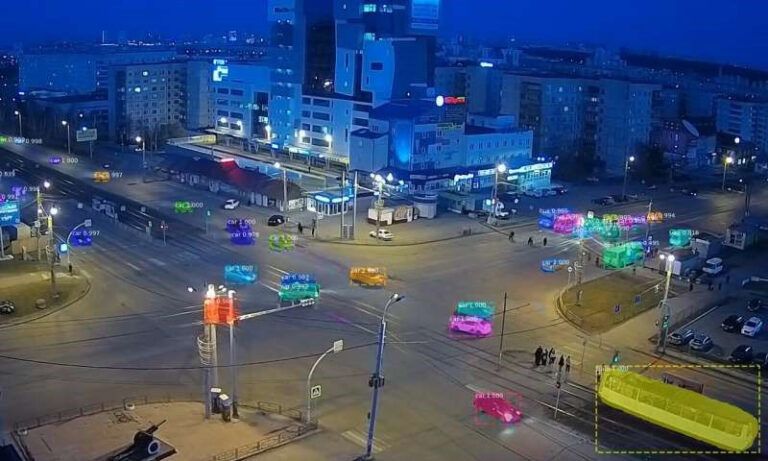Researchers at Russia’s South Ural State University (SUSU) have developed a unique intelligent system for monitoring traffic flow using artificial intelligence (AI) that does not require specific recording equipment and can work on almost any type of camera.
SUSU’s new system instantly processes data received in real-time, unlike existing programs in which processing incurs a delay of up to 10 to 15 minutes. The unique Artificial Intelligence Monitoring System (AIMS) collects, interprets and transmits data on the intensity of road traffic, classifies 10 categories of vehicles, measures speed, the current load level of each direction of the intersection, and determines the further direction of vehicles. AIMS produces real-time object recognition at the intersection through the use of only one Full HD CCTV camera. The innovative technology delivers data on the structure of the traffic flow, vehicle directions and speeds in real-time. Combined with data mining and analytics technology, AIMS will support the implementation of efficient traffic management, reduce congestion, and improve resource management.
 The current practice of monitoring traffic frequently relies on the use of expensive sensors for continuous data collection or on a visual study of traffic, usually measured over several days over certain periods of time. However, transportation agencies services do not receive proper and accurate information on the structure of traffic flow, its intensity, speed, and further direction of movement. The embedded analytic block based on AI determines the level of traffic organization at the intersection and assigns KPIs (key performance indicators) to each direction of movement.
The current practice of monitoring traffic frequently relies on the use of expensive sensors for continuous data collection or on a visual study of traffic, usually measured over several days over certain periods of time. However, transportation agencies services do not receive proper and accurate information on the structure of traffic flow, its intensity, speed, and further direction of movement. The embedded analytic block based on AI determines the level of traffic organization at the intersection and assigns KPIs (key performance indicators) to each direction of movement.
As a result of optimization of the YOLOv3 neural network algorithms, SUSU scientists have been able to achieve 95% accuracy, taking into account the loss of objects during tracking, and significantly reducing the cost of real-time monitoring equipment. SUSU’s AIMS technology will become part of the City of Chelyabinsk’s Sustainable Public Transport Project.
“We have proposed and implemented a modernized system for assessing traffic flows, based on the most recent advances in the detection and tracking of vehicles,” said project manager Vladimir Shepelev, associate professor at SUSU’ Automotive Transport Department. “Unlike existing analogs, our system recognizes and analyzes in real-time the direction of movement of vehicles with a maximum relative error of less than 10%. The closest analogs are able to determine the speed and classify vehicles in only one direction and with the condition of placing the cameras above the traffic flow with an accuracy of 80-90%. Operating a neural network allows you to generate up to 400 traffic parameters in real-time at each intersection.”
Shepelev added, “The results of this study can be applied by city authorities to improve the overall traffic capacity of the intersection. We have already proved our system at several intersections in Chelyabinsk to verify that the proposed solution is sufficiently accurate and can be used as a basis for other high-level models. In the process of developing the technology, we used the open-source Mask R-CNN and YOLOv3 neural network architectures to detect objects in real-time, as well as the SORT tracker, the code of which was modified by the team to improve the quality of object tracking.”





